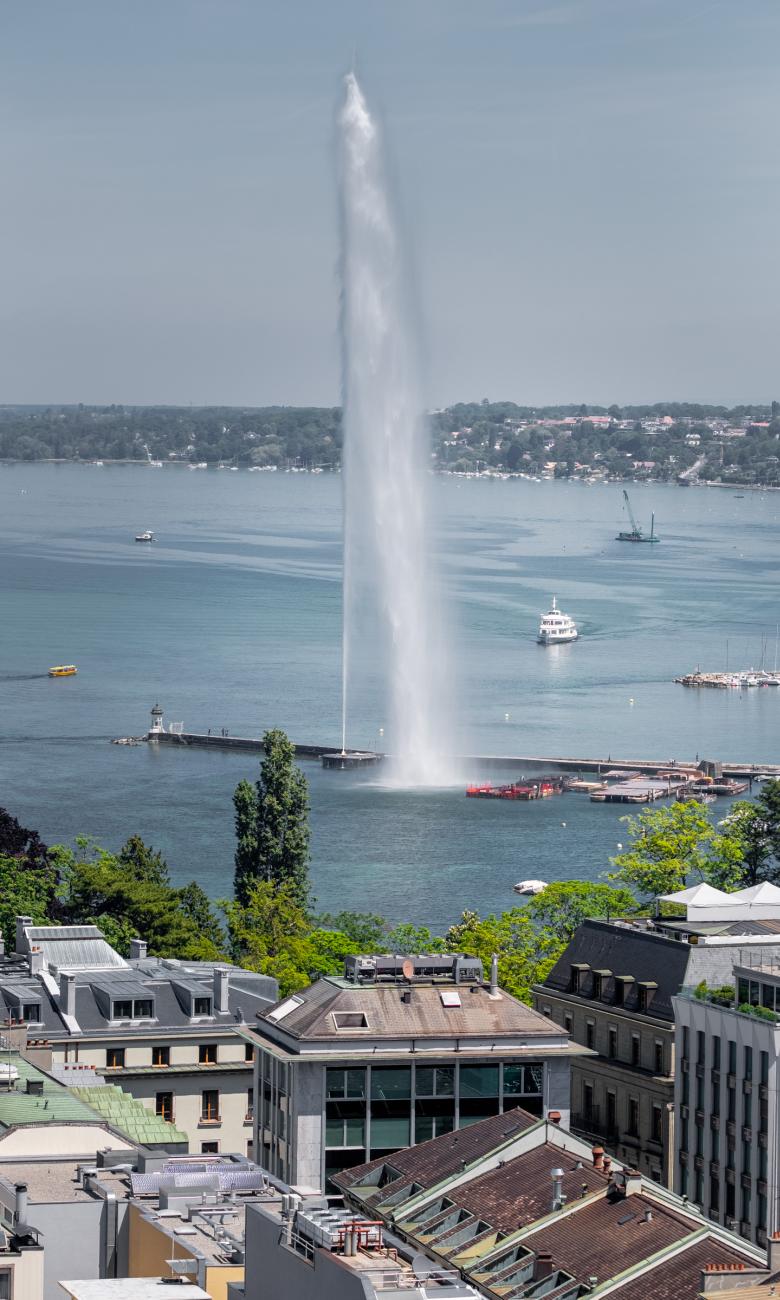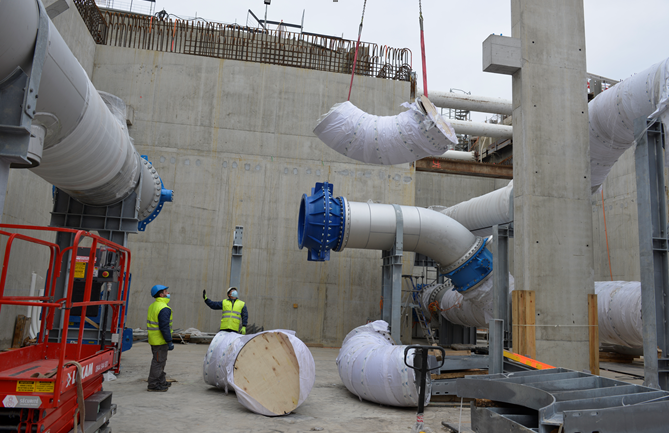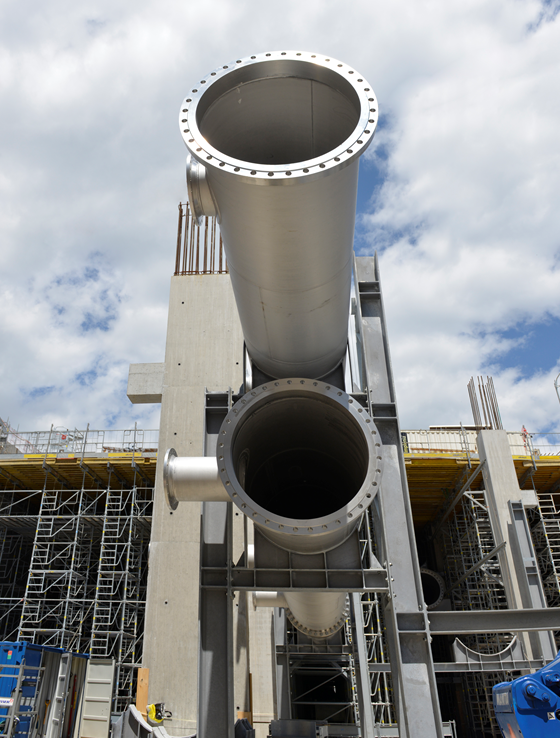Water from Lake Geneva used to heat and cool buildings
Lake water is being converted into renewable energy to heat and cool some fifty buildings in Geneva using hydrothermal technology.
Thermal networks can provide an environmentally sound method of heating and cooling buildings, as evidenced by the GeniLac project launched in 2009 in the canton of Geneva. The goal of the GeniLac project is to replace oil and gas-powered air conditioning and heating systems with alternative water powered systems. GeniLac is operated by power company Services industriels de Genève (SIG) and forms part of the canton of Geneva's climate strategy.

"The project was conceived back in 2004 when we carried out a study on the suitability of a hydrothermal system for the UN district of Geneva which has a high energy density. A thermal exchange process proved a viable solution because the buildings were large enough to accommodate this type of system," says Fabrice Malla, SIG's GeniLac project manager. "Since then, thanks to funding from the European Commission's CONCERTO initiative, the hydrothermal system has been rolled out across the area and beyond."
A major project
The project, formerly known as the Genève-Lac-Nations (GLN) project, initially involved connecting various buildings in the UN district to the system. By 2018 the system proved so effective that it has since been extended to Geneva city centre and seven municipalities. Some 50 buildings now benefit from the technology and there is a move to connect over 350 buildings to the system by 2035.

© Magali Girardin
"The system quickly became overloaded because the pipes were too narrow. By 2012, the SIG had received over 100 letters expressing an interest in connecting to the system. GeniLac has now increased pumping capacity to the city centre," explains Fabrice Malla.
The system requires heat pumps to be installed in buildings, which are connected to large underground pipes. It is difficult to set up this infrastructure in a dense urban environment like Geneva. "We are working with the Federal Roads Office and Swissgrid (the national grid company), for example, to facilitate the large-scale construction work and avoid continual traffic disruption. Some underground pipelines have therefore been constructed alongside a high-voltage power line below a motorway hard shoulder," explains Malla. Although hydrothermal systems are also in place at EPFL and in Zurich, the infrastructure required in Geneva is exceptional because of its scale and the technology used.
Local resource
Water from Lake Geneva is used to heat and cool buildings. "Using lake water is ideal, firstly, because it is a local source of renewable energy that is virtually inexhaustible and, secondly, because the water is drawn from a depth of 45 metres, which means that its temperature stays constant all year round. It is pumped through heat exchangers that are used to keep buildings cool in summer.

© Yves Bussard
Because of its versatility, hydrothermal technology outperforms conventional cooling systems by a factor of twenty. In winter, the heat pumps produce hot water. As the pumps run on 100% renewable electricity this cuts CO2 emissions significantly," says Fabrice Malla. Six thousand cubic metres of water are pumped from the lake every hour. The aim is to pump six times this amount with a view to replacing oil and gas-powered air conditioning and heating systems by 2035.
Prioritising sustainable development
Under Geneva legislation, a native tree must be planted to replace every tree cut down to make way for construction. The SIG is strongly committed to preserving this ecobalance and has established a bird island and reed bed to compensate local people for the construction work.
The SIG has been prioritising sustainable development, renewable energy and the environment since 2009
explains Véronique Tanerg, an SIG spokesperson. "We have also set up two environmental and innovation funds financed by customers who are happy to pay more for their electricity." GeniLac is not the SIG's only sustainable solution. "A heat recovery project is under way that aims to use waste heat from wastewater treatment plants for district heating systems," reveals Fabrice Malla. "We are banking on geothermal energy to wean us off fossil fuels and our ultimate goal is to achieve 80% renewable energy for the canton of Geneva."

© Yves Bussard
In 2022, voters will vote on the development of thermal systems in the canton. "As a local public service company, we intend to build the renewable thermal power highways. But it will be for local businesses based in the canton of Geneva to actually deliver the service, i.e. the heating systems. This twin-track approach will ensure GeniLac's success as Geneva's largest industrial and environmental project over the next decade," says Christian Brunier, SIG General Manager.
"The GeniLac project will not just be good for the planet, but also create sustainable economic value and jobs." It's an exciting prospect that is sure to inspire other public service companies.




